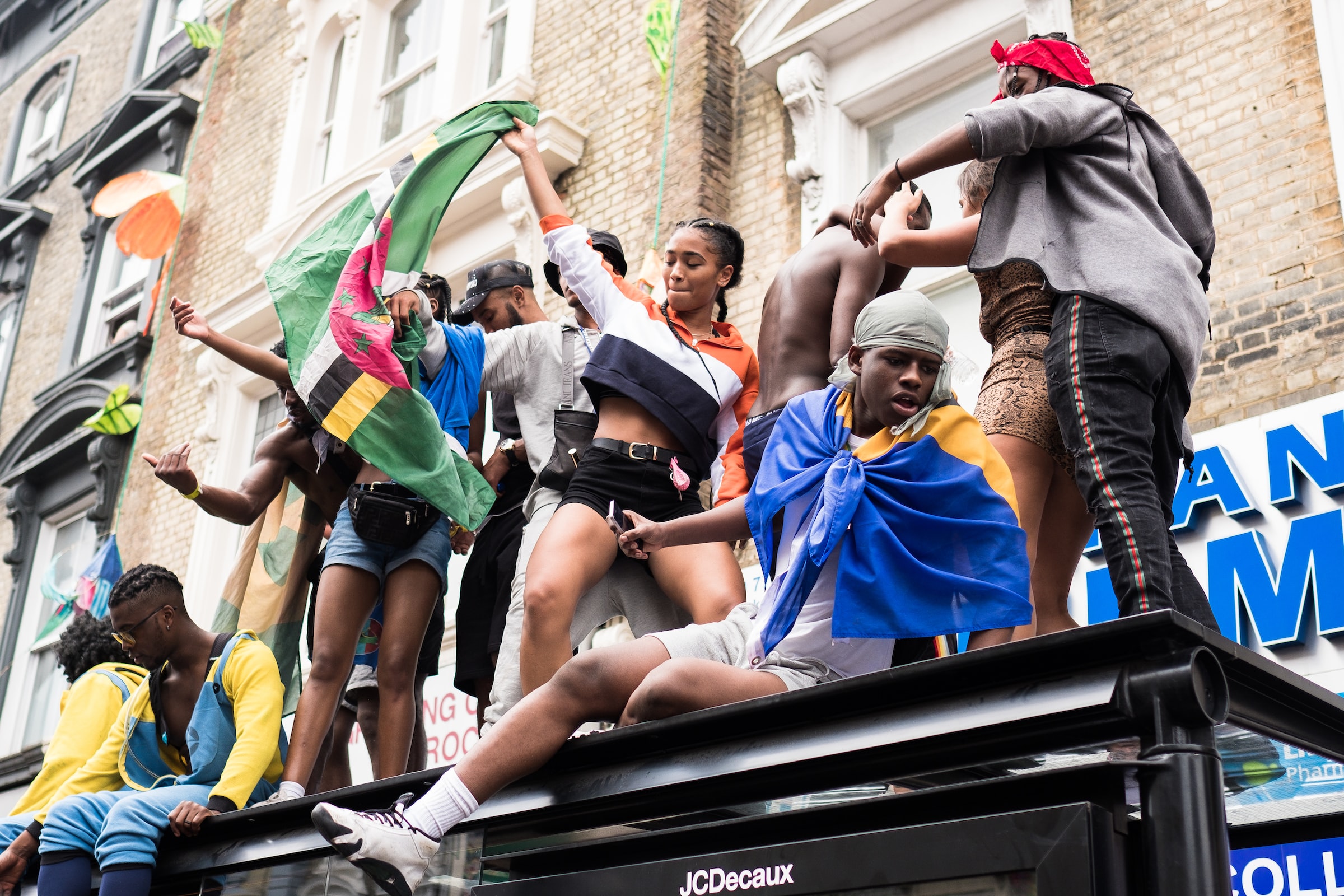
Comment Editor Esther Purves takes a deep dive into the intricacies of the recent debate over Adele’s adoption of Bantu knots for Notting Hill Carnival, discussing the differences between cultural appreciation and cultural appropriation
Her Instagram post caused a divide online, placing Adele in the centre of the cultural appropriation versus cultural appreciation debate
In early September, singer-songwriter Adele shared an Instagram post lamenting the cancellation of Notting Hill carnival. Wishing a ‘Happy what would be Notting Hill Carnival’ to her ‘beloved London,’ Adele shared an image of her wearing high-waist trousers and a bikini top detailed with the pattern of the Jamaican flag. A circle of bright yellow feathers sat behind her head, creating an ironic halo visual surrounding her hair in Bantu knots. Her Instagram post caused a divide online, placing Adele in the centre of the cultural appropriation versus cultural appreciation debate.
Adele’s choice of hairstyle is the root of her controversy. Bantu knots originated in South Africa; Bantu is a blanket term that refers to the 300 to 600 ethnic groups within southern Africa. There are images of African women wearing Bantu knots as early as 1898. Princess Gabbara, a writer for Ebony, notes that Bantu knots ‘have always held a deeper meaning within our community.’ Gerilyn Hayes, the Branded Content Editor for Naturally Curly, shares this sentiment. She describes Bantu knots as a ‘visual reminder of the origins of humanity’. Loaded with cultural significance, Bantu knots are a signifier of black heritage.
Loaded with cultural significance, Bantu knots are a signifier of black heritage
The styling of black hairstyles on white people is common, particularly in high end fashion. At Paris Fashion Week 2020, Japanese fashion brand Commes des Garcons styled white models with cornrow wigs. This choice of styling emulated Goncalo Peixoto, Marc Jacobs, Valentino, Alexander McQueen who all, in previous years, made the choice to style white models with their hair in cornrows. Speaking to Ebony, cosmetologist and author Toni Love places the origins of cornrows in Africa, noting that ‘cornrows on women date back to at least 3000 B.C.’
Gabbara details the popularisation of cornrows during the Black Power Movement in the 60’s and 70’s
Adele’s styling choice of Bantu knots received similar online criticism to Commes des Garcons. Twitter users had their say, branding the post as ‘stunning cultural appropriation’ and labelling her choice of hair as confirmation that ‘white women in pop [are] problematic.’ Adele’s choice of Bantu knots was evidence, for some, that she appropriated black culture.
Aligning with the concept of cultural appreciation (whereby someone seeks to understand and learn about a culture) several people spoke out in defence of Adele. David Lammy spoke against the backlash Adele had received, tweeting that criticism for Adele’s Notting Hill look ‘totally misses’ the spirit of the Carnival. As Adele ‘was born and raised in Tottenham,’ Lammy argues that she ‘gets [black culture] more than most.’ He ends his tweet by thanking her, presumably for bringing an ‘appreciation’ of black culture to her 39 million Instagram following.
Speaking to The Guardian in light of the appropriation/ appreciation debate, author Emma Dabiri places cultural appropriation within a ‘structural power dynamic’ where the people who appropriate belong to an advantaged group. She explains that this advantaged group ‘systematically extracts the cultural resources of a subordinate group.’ Dabiri goes on to note that the ‘structurally advantaged group becomes the primary and often financial benefactor of an innovation that was not theirs’.
Emma Dabiri places cultural appropriation within a ‘structural power dynamic’ where the people who appropriate belong to an advantaged group
The significance of financial benefit is easily demonstrated by Commes des Garcons’ cultural appropriation. Their choice to style white models with Cornrows points to their intention to capitalise upon the ‘urban’ connotations of black hairstyles. These associations play into their marketing strategy for their fashion line, leading the brand to financially profit from their choice to style with black hairstyles. Furthermore, the brand’s choice to use white models complies with Dabiri’s observation that appropriation ‘erases the subordinate group’s involvement’ with their own culture.
In light of Dabiri’s definition of cultural appropriation, Adele’s label as a cultural appropriator comes into question. While she undoubtedly belongs within the ‘advantaged’ group (her whiteness and her $190 milllion net worth confirm this), she has not financially benefited from posting an Instagram wearing this hairstyle. Coupled with her intention to wear this hairstyle to a carnival that celebrates black British culture, it is difficult to argue that she has ‘[erased] the subordinate group’ from the element of the culture that she adopted. On Twitter, Emma Dabiri aligns Adele as a cultural appreciator, stating that ‘Adele isn’t erasing anyone or claiming this as her own, she is simply participating in a culture she is likely to have grown up in in Tottenham.’
The comparison between Adele and Commes des Garcons illustrates the nuance of the cultural appreciation/ cultural appropriation debate. Although both Adele and the Commes des Garcons fashion models wore black hairstyles, the former is seen as cultural appreciation and the latter is seen as cultural appropriation. This disparity is caused by the financial power systems, or lack thereof, in play.
As Maisha Z. Johnson notes, ‘a white woman is free to take on and take off the same hairstyle that a Black woman would be ostracised for.’
If Adele manages to escape the online criticism and be defined as a cultural appreciator rather than appropriator, this shouldn’t exclude her from conversations surrounding the way white women exploit their privilege in order to enjoy black culture. Adele was able to wear a black hairstyle without experiencing any of the discrimination and violence that comes with being black. As Maisha Z. Johnson notes, ‘a white woman is free to take on and take off the same hairstyle that a black woman would be ostracised for.’ Amidst the ongoing cultural appropriation/ cultural appreciation debate, this privilege should not be forgotten.
Read more from Redbrick Culture:
Comments